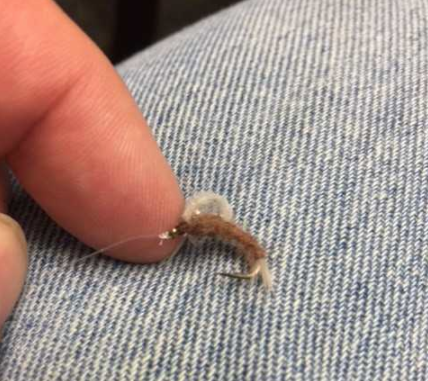By Kirk Deeter
I go through cycles when it comes to fly selection. I once spent an entire summer fishing only five patterns, just to test the theory that presentation matters more than the fly pattern itself. I didn’t draw any conclusions, but I caught plenty of trout. For the record, those patterns were: Olive Woolly Bugger, Prince nymph, Parachute Adams, Elk Hair Caddis, and Pheasant Tail nymph.
Then I went through a phase when I decided it would be fun to try to catch trout on the Colorado River by swinging classic Atlantic Salmon patterns. That kinda worked. Nothing remarkable, but I can say I caught a few nice browns on the “Thunder and Lightning.”
Right now I’m into loop wings. That’s all I’m tying at the moment. Brown bugs with a Z-lon loop… olive bugs with the loop wing… black, etc. They’re pretty easy to tie; just lash the wing on as normal, then fold it back toward the head, trim it off, and wrap on to hide any excess material. Once you get in a rhythm, you can fill a fly box pretty quickly.
I actually spent some time under the water last August (with a mask) looking at trout eating small bugs, and they do tend to key on the more helpless bugs whose wings aren’t fully formed. That loop also tends to trap micro air bubbles, and for whatever reason, that’s a plus as well.
My favorite thing about loop wings is that you can put just a dab of floatant, only on the loop wing itself, and the body of the fly will ride tantalizingly just below the surface, like that juicy meal the big, picky trout prefer. If I get refused on a standard top-riding pattern, I’ll usually size down as a first option. And if that doesn’t work, I’ll try the loop wing emerger trick. And if that doesn’t work, I’ll throw a night crawler. Just kidding… wanted to see who was reading all the way to the end.
Kirk Deeter is the vice-president of Trout Media. He lives and works in the mountains outside of Denver.



